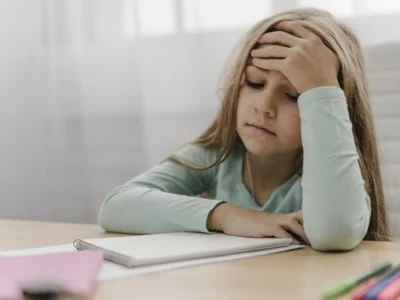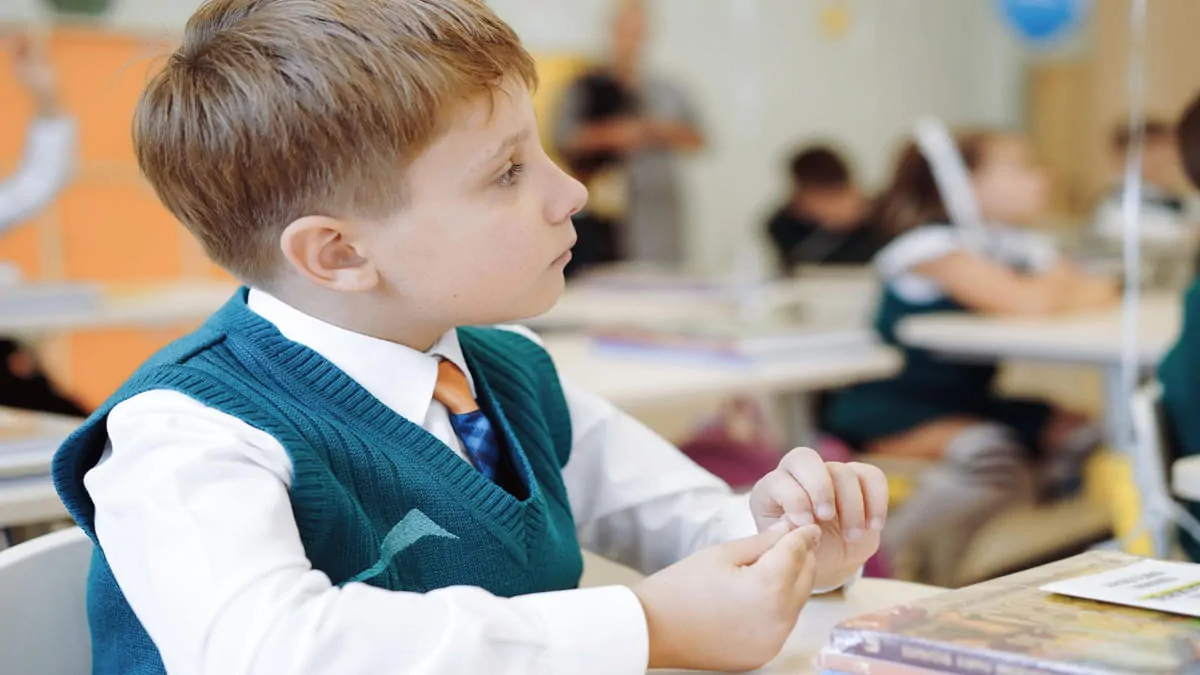Psychologist Kira Guerra Franco and psychotherapist Iván Baliña Rodríguez-Valcarce explain in this article how FOMO (Fear of Missing Out), driven by the use of social networks, creates a phenomenon of social anxiety that affects millions of people who seek to be continuously connected so as not to miss anything in the digital age.
Have you ever felt distressed when seeing photos of a party you didn’t attend, wishing you had been there? Maybe you asked yourself if you were missing the best night of your life while looking at the photos on Instagram’s home screen. If something similar has happened to you, you have likely experienced FOMO.
Introduction
In the digital age, social networks have profoundly transformed the way we interact, communicate and perceive the world (Díaz & Extremera, 2020). The proliferation of Information and Communication Technologies (ICT), especially through digital platforms, has amplified some psychological phenomena, among which the Fear of Missing Out (FOMO) stands out, or the fear of missing out.
This term, coined by Dan Herman and popularized by Przybylski et al. (2013), describes the anxiety that arises from feeling that others are enjoying experiences from which one is absent (Gupta & Sharma, 2021; Torres Serrano, 2020), showing a desire to be continuously connected with what others are doing (Przybylski et al., 2013).
It can exist as an episodic feeling that occurs in the middle of a conversation, as a long-term disposition or as a mental state that leads the individual to feel a deeper sense of social inferiority, loneliness or intense anger (Gupta & Sharma, 2021). Although FOMO is not exclusive to social networks, the proliferation of these platforms has exacerbated this ancient fear.
The impact of this phenomenon is not limited to the individuals who experience it; it also affects society as a whole. Social networks have created a new interaction dynamic in which exposure to others’ lives, carefully selected and presented, often generates distorted expectations about what it means to live a full life (Braña Sánchez & Moral Jiménez, 2023).
How algorithms work
Digital platforms are not neutral; they are designed to maximize users’ interaction time, using intermittent positive reinforcement techniques, such as notifications and social validations, to keep recipients active on the platform. This creates a cycle that is difficult to break, especially in adolescents, who are more vulnerable to instant gratification (Wu et al., 2013).
The algorithms they use respond to commercial interests. Robert Cialdini, in the new edition of Influence (2021), explains how these algorithms employ principles of persuasion, such as intermittent reinforcement and reciprocity.
Repeated exposure to positive stimuli, such as “likes” or comments, reinforces the behavior of constant use, which, from a neuropsychological point of view, affects the brain areas responsible for self-regulation and self-control, such as the prefrontal cortex (Turel et al., 2014).
This dependence on algorithms not only impacts individuals but also society. Content personalization can generate information bubbles and polarization (Todorovich, 2021), affecting social cohesion and contributing to the fragmentation of communities. Furthermore, this dynamic of manipulation reinforces superficial behaviors and social comparison, which can have negative effects on users’ self-esteem, especially among young people (Vogel et al., 2014).
FOMO in the context of adolescence
Although this phenomenon can affect people of any age, the impact of FOMO is particularly relevant in young people, who go through a critical period of brain and emotional development (Błachnio & Przepiorka, 2018). During this stage, the brain is especially vulnerable to external influences due to its high plasticity.
In their quest to understand themselves and establish their identity, adolescents use these platforms as a tool to explore and experiment with different forms of self-expression and social connection. FOMO, in this context, acts as a catalyst for social media use, where the need to find this digital identity leads to massive exposure of activities and experiences. Missing out, therefore, could imply the feeling of exclusion undermining the self-esteem of the person who feels it. Moreover, social pressure and online validation can affect behavior, leading individuals to seek to engage in activities at all times.
Brain areas involved
Since the FOMO phenomenon is relatively novel, there are still no conclusive studies on all the brain areas and neuropsychological processes involved. However, research has shown that brain areas such as the anterior cingulate cortex (ACC), the insula and the dorsolateral prefrontal cortex (DLPFC) activate during experiences of social exclusion ((Burklund et al., 2007;
Chester et al., 2016; DeWall et al., 2010; Eisenberger et al., 2003, 2007; Kross et al.,
2007, 2011).
The activation of the anterior cingulate cortex (ACC), for example, has been linked to the emotional pain that arises from feeling excluded or not participating in social events (Eisenberger et al., 2003). This brain area activates both in situations of social exclusion and in scenarios of physical pain, which reflects the intensity of the distress that FOMO can generate. It is also involved in emotional processing and conflict evaluation. The insula, for its part, plays a crucial role in interoception, that is, the perception of the body’s internal sensations, and its activation in situations of social exclusion amplifies negative emotional responses (Eisenberger et al., 2007).
From a broader perspective, FOMO not only affects emotional regulation but also cognitive processing. Information overload and the constant need to check what is happening in the environment, especially the digital one, fragment attention and hinder deep reflection (Shanmugasundaram & Tamilarasu, 2023), resulting in information consumed quickly and forgotten just as fast.
It is also not clear which reward pathway is implicated in its reinforcing effects. It is widely accepted that dopaminergic pathways, in particular the mesolimbic systems, are activated by satisfying social connections (Gupta and Sharma, 2021; Todorovich, 2021). Likewise, the encoding of prediction error in reward and its variable patterns help maintain these behaviors.

Subscribe
to our
Newsletter
Social and emotional consequences of FOMO
FOMO affects individuals’ emotional and social well-being. Some studies support that the constant pressure to stay informed about others’ activities, together with the need for social validation, can lead to notable levels of stress, anxiety and mental exhaustion (Alkis et al., 2017; Gupta & Sharma, 2021; Tanhan et al., 2022).
People who fear missing out on interactions with their peers or rewarding social events may show dysregulation in their use of social networks, remaining constantly connected to relieve the anxiety caused by possible exclusion (Ferreira et al., 2021; Fioravanti et al., 2021).
Sociologist Zygmunt Bauman in his work Liquid Modernity (2000) argues that social relationships in modernity have become fragile, which is evident in the dynamics of networks. Online connections often go hand in hand with superficiality, creating a disconnect between the idealized life that is presented on digital platforms and complex human reality. This dissonance between digital life and tangible life generates frustration and pain, since unrealistic expectations about what it means to be successful or loved do not match physical experiences, which negatively affects individuals’ self-esteem and emotional well-being (Chou & Edge, 2012).
However, it is worth noting that, to date, the scientific literature does not reach a consensus regarding the association between the internet, FOMO and symptoms of depression and/or anxiety (Akbari et al., 2021).
Strategies to manage FOMO
To manage FOMO and its effects, various strategies have been proposed.
FOMO-R method
The FOMO-R method (Alutaybi et al., 2020) is an approach based on self-assessment and planning concrete actions to increase control over social media use. This method includes five stages: preparation, planning, action, evaluation and review. These phases allow individuals to identify their usage patterns, develop strategies to manage FOMO and evaluate the effectiveness of those strategies.
1. Preparation stage
In this stage the aim is to increase awareness about FOMO, helping individuals understand the different types they may experience. Using a self-assessment leaflet, specific FOMO symptoms are diagnosed, preparing individuals for the next stage.
2. Planning stage
The objective here is for individuals to plan how to manage their FOMO, providing them with specific countermeasures. These include techniques and strategies to prevent it.
3. Action stage
In this phase, individuals implement and practice the countermeasures selected during the planning stage. They are encouraged to dedicate a specific time, generally a week, to rehearse these techniques and prevent relapses.
4. Evaluation stage
Individuals evaluate the effectiveness of the countermeasures used. If they find that at least one countermeasure is useful for each type of FOMO, they move on to the review stage. If not, they identify the challenges and select new countermeasures or return to earlier stages to adjust their approach.
5. Review stage
Individuals review the actions carried out in the previous stages to determine whether they have managed to control their FOMO. If successful, the process ends or returns to preparation to identify other possible types. If they fail to control their FOMO, they review and adjust their approach until they find an effective solution. Additionally, they are provided with further assistance in order to foster individual empowerment.
The FOMO-R provides a structured framework to help people reduce their anxiety around FOMO, promoting healthier emotional regulation. This approach can be especially useful for adolescents.
In addition, integrating prevention and self-care techniques, such as mindfulness (Chan et al., 2022), allows people to reconnect with the present and distance themselves from the need for validation.
Final reflection
FOMO and excessive use of social networks are phenomena characteristic of the age of hyperconnectivity, with profound implications for emotional and social well-being. While social networks have greatly facilitated communication and access to information, they have also introduced new challenges, especially in terms of mental health (Soriano-Sánchez, 2022).
As individuals and as a society, it is essential that we reflect on our relationship with the digital world and promote a healthy and conscious use of these technologies. This includes encouraging mindful disconnection, developing self-care and prevention strategies, and promoting responsible digital education that allows people, especially young people, to reconnect with the world outside the screen (Martínez, 2021).
Instead of demonizing social networks, we should focus on harnessing their benefits while mitigating their possible negative effects. The call for collective reflection is urgent; it is not black or white; promoting mindfulness practices and offering healthy alternatives within technology use are key steps to ensure that the digital world enriches, rather than eclipses, the fundamental pillars of our society: human relationships, personal development and connection with the present.
Bibliography
- Akbari, M., Seydavi, M., Palmieri, S., Mansueto, G., Caselli, G., & Spada, M. M. (2021). Fear of missing out (FoMO) and internet use: A comprehensive systematic review and meta-analysis. Journal of Behavioral Addictions, 10(4), 879-900. https://doi.org/10.1556/2006.2021.00083
- Alkis, Y., Kadirhan, Z., & Sat, M. (2017). Development and validation of social anxiety scale for social media users. Computers in Human Behavior, 72, 296- 303. https://doi.org/10.1016/j.chb.2017.03.011
- Alutaybi, A., Al-Thani, D., McAlaney, J., & Ali, R. (2020). Combating fear of missing out (FoMO) on social media: The FoMO-R method. International Journal of Environmental Research and Public Health, 17(17), 6128. https://doi.org/10.3390/ijerph17176128
- Bauman, Z. (2000). Liquid modernity. Cambridge, UK: Polity Press; Malden, MA: Blackwell.
- Błachnio, A., & Przepiórka, A. (2018). Facebook intrusion, fear of missing out, narcissism, and life satisfaction: A cross-sectional study. Psychiatry Research, 259, 514–519. https://doi.org/10.1016/j.psychres.2017.11.012
- Braña Sánchez, Á. J., & Moral Jiménez, M. de la V. (2023). Nomophobia and FoMO in smartphone use among young people: The role of anxiety about being connected. Health and Addictions/Salud y Drogas, 23(1), 117-https://doi.org/10.21134/haaj.v23i1.707
- Burklund, L. J., Eisenberger, N. I., & Lieberman, M. D. (2007). The face of rejection: Rejection sensitivity moderates dorsal anterior cingulate activity to disapproving facial expressions. Social Neuroscience, 2(3-4), 238–253. https://doi.org/10.1080/17470910701391711
- Chan, S. S., Van Solt, M., Cruz, R. E., Philp, M., Bahl, S., Serin, N., Amaral, N. B., Schindler, R., & Bartosiak, A. (2022). Social media and mindfulness: From the fear of missing out (FOMO) to the joy of missing out (JOMO). Journal of Consumer Affairs. https://doi.org/10.1111/joca.12476
- Chester, D. S., DeWall, C. N., & Pond, R. S., Jr (2016). The push of social pain: Does rejection’s sting motivate subsequent social reconnection?. Cognitive, affective & behavioral neuroscience, 16(3), 541–550. https://doi.org/10.3758/s13415- 016-0412-9
- Chou, H. T., & Edge, N. (2012). “They are happier and having better lives than I am”: the impact of using Facebook on perceptions of others’ lives. Cyberpsychology, behavior and social networking, 15(2), 117–121. https://doi.org/10.1089/cyber.2011.0324
- Cialdini, R. B. (2021). Influence: The psychology of persuasion. Harper Business. Dewall, C. N., Macdonald, G., Webster, G. D., Masten, C. L., Baumeister, R. F., Powell, C., Combs, D., Schurtz, D. R., Stillman, T. F., Tice, D. M., & Eisenberger, N. I. (2010). Acetaminophen reduces social pain: Behavioral and neural evidence. Psychological Science, 21(7), 931–937. https://doi.org/10.1177/0956797610374741
- Díaz, N., & Extremera, N. (2020). Emotional intelligence, smartphone addiction and psychological distress as predictors of nomophobia in adolescents. Know and Share Psychology, 1(2), 7-13. https://doi.org/10.25115/kasp.v1i2.3195
- Eisenberger, N. I., Gable, S. L., & Lieberman, M. D. (2007). Functional magnetic resonance imaging responses relate to differences in real-world social experience. Emotion (Washington, D.C.), 7(4), 745–754. https://doi.org/10.1037/1528-3542.7.4.745
- Eisenberger, N. I., Lieberman, M. D., & Williams, K. D. (2003). Does rejection hurt? An FMRI study of social exclusion. Science (New York, N.Y.), 302(5643), 290– 292. https://doi.org/10.1126/science.1089134
- Ferreira, D., De Sousa, H., De Moraes, G., De Assis, S. E., Negreiros, F., & Medeiros, E. D. (2021). Fear of missing out (FoMO), social media and anxiety: A systematic review. Psicología, Conocimiento y Sociedad, 11(3), 99- 114. https://doi.org/10.26864/pcs.v11.n3.7
- Fioravanti, G., Casale, S., Bocci Benucci, S., Prostamo, A., Falone, A., Ricca, V., & Rotella, F. (2021). Fear of missing out and social networking sites use and abuse: A meta-analysis. Computers in Human Behavior, 122, Article 106839. https://doi.org/10.1016/j.chb.2021.106839
- Gupta, M., & Sharma, A. (2021). Fear of missing out: A brief overview of origin, theoretical underpinnings and relationship with mental health. World journal of clinical cases, 9(19), 4881–4889. https://doi.org/10.12998/wjcc.v9.i19.4881
- Kross, E., Berman, M. G., Mischel, W., Smith, E. E., & Wager, T. D. (2011). Social rejection shares somatosensory representations with physical pain. Proceedings of the National Academy of Sciences of the United States of America, 108(15), 6270–6275. https://doi.org/10.1073/pnas.1102693108
- Kross, E., Egner, T., Ochsner, K., Hirsch, J., & Downey, G. (2007). Neural dynamics of rejection sensitivity. Journal of Cognitive Neuroscience, 19(6), 945–956. https://doi.org/10.1162/jocn.2007.19.6.945
- Martínez, M. (2021). Existing relationship between problematic mobile phone and internet use and adolescence. OIDLES. Desarrollo Local y Economía Social, [In press], 57-70. https://www.eumed.net/es/revistas/oidles/especial-noviembre 21/internet-adolescencia
- Przybylski, A. K., Murayama, K., DeHaan, C. R., & Gladwell, V. (2013). Motivational, emotional, and behavioral correlates of fear of missing out. Computers In Human Behavior, 29(4), 1841-1848. https://doi.org/10.1016/j.chb.2013.02.014
- Shanmugasundaram, M., & Tamilarasu, A. (2023). The impact of digital technology, social media, and artificial intelligence on cognitive functions: A review. Frontiers in Cognition, 2, Article 1203077. https://doi.org/10.3389/fcogn.2023.1203077
- Soriano-Sánchez, J. G. (2022). Psychological factors and consequences of the Fear of Missing Out syndrome: A systematic review. Revista de Psicología y Educación – Journal of Psychology and Education, 17(1), https://doi.org/10.23923/rpye2022.01.217
- Tanhan, F., Özok, H. İ., & Tayi̇ Z, V. (2022). Fear of missing out (FOMO): A current review. Psikiyatride GüNcel YaklaşImlar/Psikiyatride Güncel Yaklaşımlar, 14(1), 74-85. https://doi.org/10.18863/pgy.942431
- Todorovich, E. (2021). The pandemic of social networks. In II Jornada “La Ética en la Ingeniería Argentina”. Universidad Nacional del Centro de la Provincia de Buenos Aires, Facultad de Ingeniería, Universidad FASTA.
- Torres Serrano, M. (2020). Fear of missing out (FoMO) and Instagram use: Analysis of the relationships between narcissism and self-esteem. Aloma: revista de psicología, ciències de l’educació i de l’esport Blanquerna, 38(1), 31-38. https://doi.org/10.51698/aloma.2020.38.1.31-38
- Turel, O., He, Q., Xue, G., Xiao, L., & Bechara, A. (2014). Examination of neural systems sub-serving facebook “addiction”. Psychological reports, 115(3), 675– 695. https://doi.org/10.2466/18.PR0.115c31z8
- Vogel, E. A., Rose, J. P., Roberts, L. R., & Eckles, K. (2014). Social comparison, social media, and self-esteem. Psychology of Popular Media Culture, 3(4), 206– 222. https://doi.org/10.1037/ppm0000047
- Wu, A. M., Cheung, V. I., Ku, L., & Hung, E. P. (2013). Psychological risk factors of addiction to social networking sites among Chinese smartphone users. Journal of behavioral addictions, 2(3), 160–166. https://doi.org/10.1556/JBA.2.2013.006
If you liked this blog post about the FOMO: The fear of being left out of the digital age, you will surely be interested in these NeuronUP articles:
“This article has been translated. Link to the original article in Spanish:”
FOMO: El miedo a quedarse fuera de la era digital







 Strategies and Therapies for Deficits in Social Cognition in Schizophrenia
Strategies and Therapies for Deficits in Social Cognition in Schizophrenia
Leave a Reply